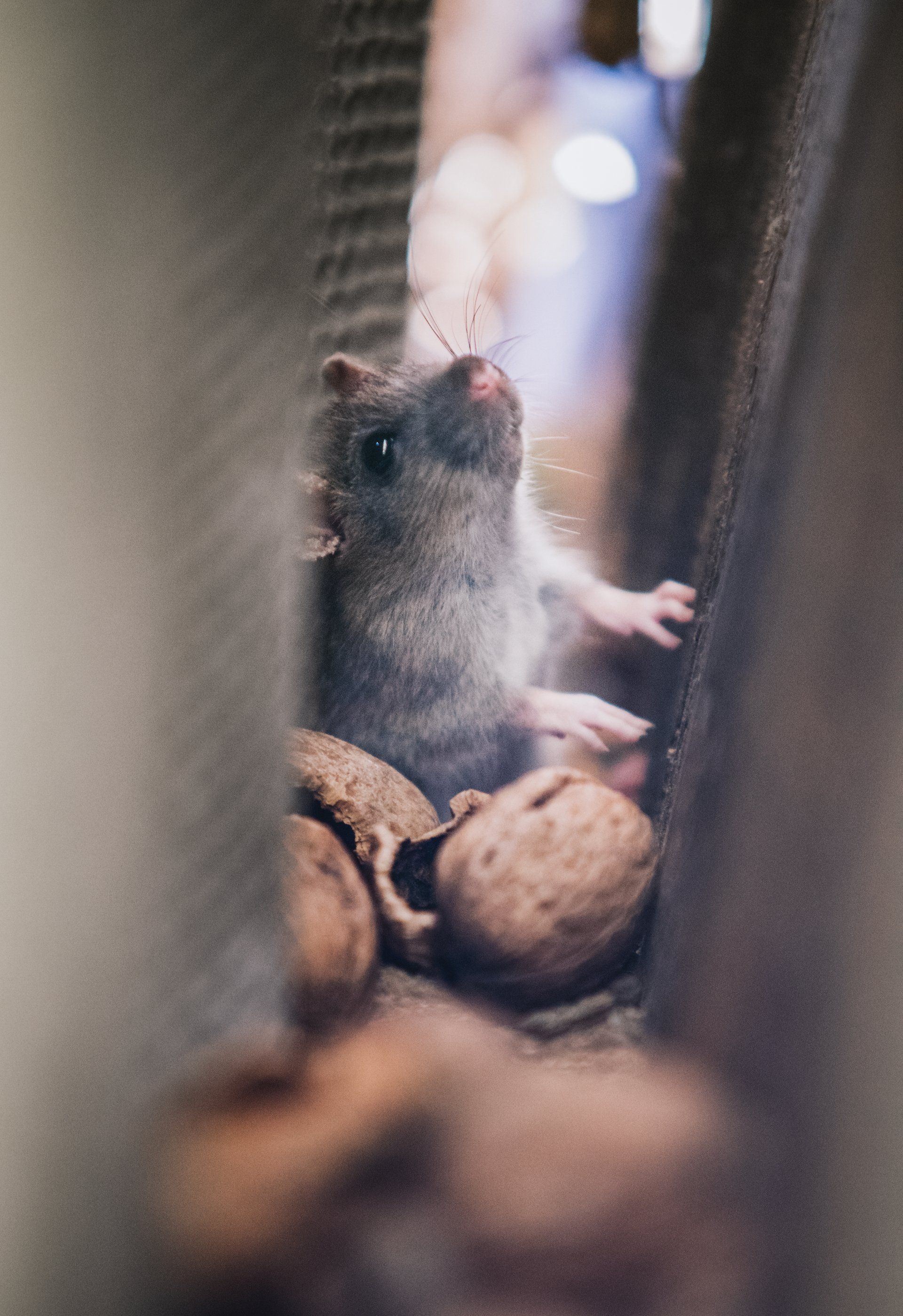Rodent Control
Columbus, OH
Your Ally Against Rodent Infestations
Rodent infestations are a common problem for homeowners in Columbus, OH. These pesky creatures can spread disease, cause damage to your property, and contaminate your food. If you have noticed rodent signs in your home or business, it is important to act quickly before the problem escalates.
At Stryker Pest Control, we understand the distress and damage rodents can cause in your home or business. Serving Columbus, OH, and surrounding areas, we specialize in comprehensive rodent control services designed to protect your property and health from the dangers of rodent infestations.
Relief From Rats and Rodents
At Stryker Pest Control, we have a team of trained professionals who are equipped to handle all types of rodent problems. Whether you are dealing with a mouse infestation or a rat problem, we have the expertise and resources to eliminate these pests from your home or business effectively.
Our pest control services include thorough inspections of your property to identify any signs of rodent activity, such as mouse droppings or chew marks. We also use a variety of methods, including trapping, baiting, and exclusion techniques, to exterminate and prevent future infestations.
Understanding Rodent Infestations
Rodents, including mice, rats, voles, and more, are not just a nuisance but a serious health hazard. These creatures can spread over 35 diseases and cause significant property damage by gnawing on electrical wires, structural components, and personal belongings.
Mice: Small but Destructive
Mice are known for their rapid reproduction rate and ability to squeeze through tiny openings, making them formidable invaders. Despite their small size, mice can jump up to 12 inches high and run up almost any vertical surface, making almost no place out of reach for these pests. Their urine and feces can contaminate surfaces, food, and water sources, threatening your health.
House mice reproduce at a remarkable rate. The female can have a litter of babies every three weeks. Each litter consists of 4 - 12 babies who will go on to reproduce between 4 - 7 weeks of age. Female mice are known as does, males are bucks, and babies are called pups or pinkies because of their bright pink color.
Signs that you have mice problems:
- Mice droppings, which are small and dark brown
- Chew marks on food packaging, wires, or other household materials
- Scratching or scurrying sounds coming from walls or ceilings
- Nests made of shredded paper or fabric in hidden areas like attics or basements
If you have noticed any of these signs, it is crucial to take immediate action. Ignoring a mouse problem can quickly lead to a full-blown infestation.
Rats: Larger and More Destructive
Rats are bigger and more destructive than mice, causing significant damage to your property. They have strong teeth that can gnaw through almost any material, including plastic, wood, and even metal. Norway rats are also known for carrying diseases and parasites that can pose a threat to humans. The Norway rat, also known as the brown rat or sewer rat, has a stocky, brownish body with small ears and eyes.
Signs that you have rat problems:
- Rat droppings that are larger and darker than mouse droppings
- Grease marks on walls or floors caused by rat fur rubbing against surfaces
- Holes in food containers, gnawed wires, or damaged insulation
- Strong, musty odors coming from hidden areas like crawl spaces or attics
Voles: The Lawn Destroyers
Rodent infestation can also occur outside your home, and voles are a common culprit. These small rodents resemble mice but have shorter tails and rounder bodies, typically found in yards or gardens. Voles are herbivores that can cause significant damage to lawns, plants, and trees. They often create visible tunnels on the surface of the ground or just under the grass.
Voles are vegetarians who thrive primarily on plants, roots, grasses, tree bark, fruits, and nuts. They can be found in grassy fields, woodlands, lakes and rivers, and agricultural areas. Voles can produce as many as 12 pups per litter up to 12 times a year, with an average of 3 to 7 pups per litter.
Voles cause damage by feeding on a wide variety of garden plants and often girdle trees, which is often fatal to the tree. Many complaints are made about their underground tunnel system, which is often confused with a mole's.
Moles: The Subterranean Pests
While not technically rodents, moles also pose a threat to your property and can be difficult to control. These insect-eating mammals live underground and create extensive tunnel systems that can ruin your lawn or garden. Moles have large front paws with sharp claws that they use to dig through the soil in search of food. Their presence can also attract other pests like voles, who use their tunnels for shelter.
Moles are solitary creatures and can reproduce quickly. Female moles give birth to litters of up to 7 pups at a time and can have multiple litters in a year. They often tunnel under lawns, creating mounds of soil or raised ridges on the surface.
Additional Services We Offer
Beyond rodent control, Stryker Pest Control offers a comprehensive range of pest control services to address any issue you might face:
No matter the type of pest infestation you're facing, Stryker Pest Control is ready to help. Contact us today for a consultation and take the first step towards reclaiming your home from unwanted pests.
Health Concerns of Rats and Other Rodents
Apart from the potential damage to your property, rats and other rodents can also be a significant health concern. A pest infestation can transmit diseases, parasites, and bacteria through their droppings, urine, or bites. Some common health concerns associated with rats and other rodents include:
- Hantavirus
- Salmonellosis
- Leptospirosis
- Lymphocytic choriomeningitis virus (LCMV)
- Rat-bite fever
- Tularemia
Locations We Serve
Professional Pest Extermination Service for Rodent Control
If you are dealing with a rodent infestation, it is essential to seek professional help. Our rat control and extermination services use a combination of trapping, baiting, and exclusion techniques to eliminate and prevent future pest problems. Our trained technicians can identify the type of rodent invading your property and develop a customized treatment plan to address the issue.
Stryker Pest Control has provided Columbus area residents with top-notch pest control services for many years. Our team of experts has the knowledge, experience, and equipment to handle any rodent problem efficiently.







